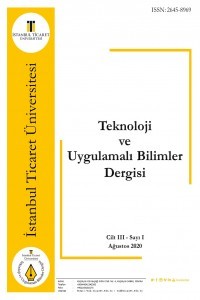Nonlinear Control of Power Coefficients in Wind Turbines
Wind speed above rated value causes high power and generator over speed. This leads to overloading and breakdown of the generator. As a result, control is required to maintain the desired generated electrical power. Many papers use the blade pitch angle, which is highly non-linear as control input to achieve this goal. In this paper, the power coefficient is used for the first time as the control input due to its simplicity, noting that power coefficient is a linear coefficient of the rotor power. A non-linear controller called Sliding mode is used to command the power coefficient to regulate the rotor speed to the desired value. The actual pitch angle for every wind speed is determined by designing some algorithms which are used with the power coefficient from the controller. The simulation results show that this control strategy is able to regulate the generator power by setting the rotor speed to its desired value. Another non-linear controller called feedback linearization is also used to compare its results to the sliding mode controller. This is to show that other controllers can also be used. The simulation results of the two controllers are indistinguishable.
Keywords:
wind turbine electrical power, generator speed, power coefficient pitch angle, sliding mode control,
___
- Boukhezzar, B., Lupu, L., Siguerdidjane, H., & Hand, M. (2007). Multivariable control strategy for variable speed, variable pitch wind turbines. Renewable Energy 32, 1273–1287
- Boukhezzar, B., Siguerdidjane, H. (2005). Nonlinear Control of Variable Speed Wind Turbines without wind speed measurement. 44th IEEE Conference on Decision and Control, and the European Control Conference, Seville, Spain, December 12-15, 2005
- Boukhezzar, B., & Siguerdidjane, H. (2005). Nonlinear Control of Variable Speed Wind Turbines for Power Regulation. Proceedings of the 2005 IEEE Conference on Control Applications, Toronto, Canada, August 28-31, 2005
- Hand, M.M., Balas, M.J. (1999). Non-linear and linear model based controller design for variable speed wind turbines. Proceedings of FEDSM99: 3rd ASME/JSME Joint Fluids Engineering Conference, July 18–23, 1999, San Francisco, California
- Hwas, A., Katebi, R. (2012). Wind Turbine Control Using PI Pitch Angle Controller. IFAC Conference on Advances in PID Control, Brescia (Italy), March 28-30, 2012
- Jing, Y., Sun, H., Zhang, K., & Zhang, T. (2017). Variable Speed Control of Wind Turbines Based on the Quasi-Continuous High-Order Sliding Mode Method. Energies 2017, 10(10), 1626; https://doi.org/10.3390/en10101626
- Manwell, J.F., McGowan, J.G. & Rogers, A.L. (2002). Wind Energy Explained, theory, design and application. second edition John Wiley & Sons, Ltd.
- Martinez, J. (2007). Modelling and Control of Wind Turbines. Master’s thesis Imperial College London.
- Mullane, A., Lightbody, G., & Yacamini, R. (2001). Adaptive Control of Variable Speed Wind Turbines. Rev. Energ. Ren.: Power Engineering, 101-110.
- VEM motors GmbH. (2000). Three-phase asynchronous generators. VMUK_NS02-113-EN-2/17 Printed in Germany. Änderungen vorbehalten.
- Verdonschot, M.J. (2009). Modeling and Control of wind turbines using a Continuously Variable Transmission. Master’s thesis Eindhoven University of Technology, Eindhoven.
- Wijewardana, S., Shaheed, M.H., & Vepa, R. (2016). Optimum Power Output Control of a Wind Turbine Rotor. Hindawi Publishing Corporation International Journal of Rotating Machinery Volume, Article ID 6935164.
- Yayın Aralığı: Yılda 2 Sayı
- Başlangıç: 2018
- Yayıncı: İstanbul Ticaret Üniversitesi
Sayıdaki Diğer Makaleler
BİNA SİRKÜLASYON ALANLARINDA İÇ MEKÂN VE YAKIN ÇEVRESİ ERİŞİLEBİLİRLİK
Alieu Khama BADJIE, Muammer KALYON
David LEDO HERNANDEZ, Özgür ÇENGEL
KENTSEL DÖNÜŞÜM SÜRECİNDE İSTANBUL FENERBAHÇE BÖLGESİNDE ÜRETİLEN KONUTLARIN CEPHE TASARIMLARI
ROTTERDAM, KOP VAN ZUID KENTSEL DÖNÜŞÜM PROJESİ
KURUMLARIN AÇTIĞI KAMULAŞTIRMA BEDEL TESPİT DOSYALARINA İLİŞKİN BİR İNCELEME
CITTASLOW-SAKİN ŞEHİRLERDE YAŞANABİLİRLİK ÜZERİNE BİR ARAŞTIRMA
